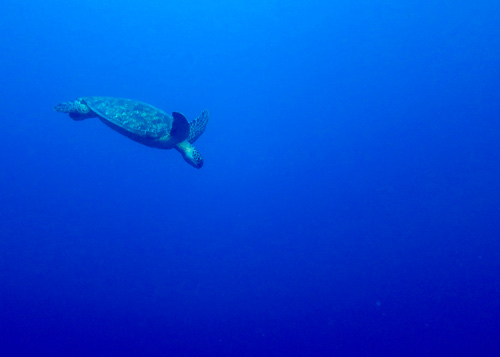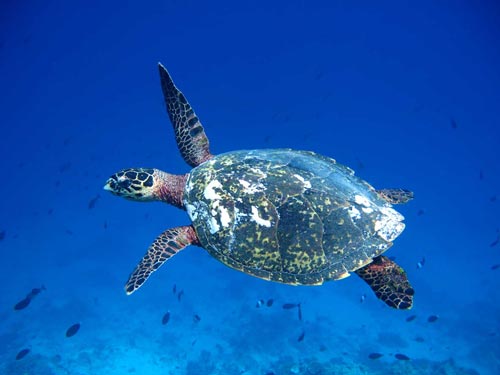Leatherbacks can dive to a depth of more than 1,300 meters (4,265 feet) in search of their prey, jellyfish. The hard-shelled species dive at shallower depths, typically up to 175 meters (500 feet) though olive ridleys have been recorded at over 200 meters (660 feet).
The leatherback is adapted to deep dives because it lacks a rigid breastbone. Its leathery shell also absorbs nitrogen, reducing problems arising from decompression during deep dives and resurfacing (i.e., “the bends”).


References:
- Leatherback turtle dives deeper than a Navy sub, smashing world record in the process, Live Science, June 14, 2024
- García-Párraga D, Crespo-Picazo JL, Bernaldo de Quirós Y, Cervera V, Martí-Bonmati L, Díaz-Delgado J, Arbelo M, Moore MJ, Jepson PD and Fernández A 2014. Decompression sickness (‘the bends’) in sea turtles. Diseases of aquatic organisms 111: 191-205.
- Houghton JDR, Doyle TK, Davenport J, Wilson RP and Hays GC 2008. The role of infrequent and extraordinary deep dives in leatherback turtles (Dermochelys coriacea). The Journal of Experimental Biology 211: 2566-2575.
- McNahon CR, Bradshaw CJA and Hays GC 2007. Satellite tracking reveals unusual diving characteristics for a marine reptila, the olive ridley turtle Lepidochelys olivacea. Marine Ecology Progress Series 329: 239-252.

